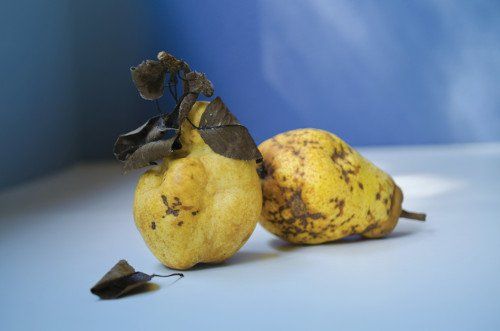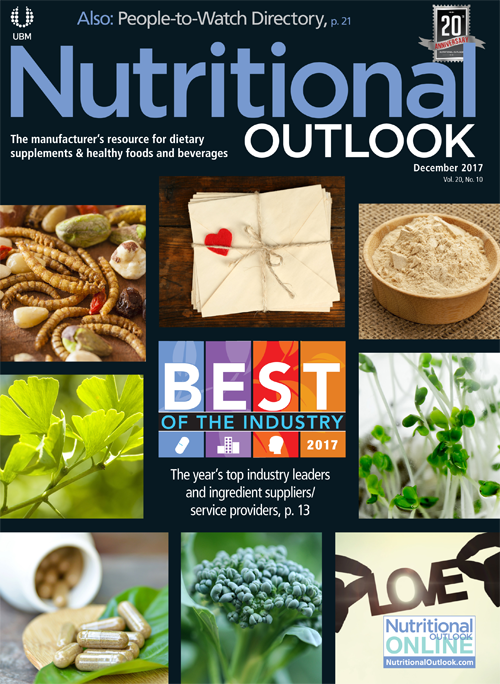Sustainability: The Beauty of Ugly Food
“Ugly” ingredients look better every day.
Photo © Shutterstock.com/Ashley N Mikalauskas

One person’s trash is another’s treasure. And, what’s gaining increasing attention is the shockingly large amount of the edible treasures many people simply toss out because of a small blemish or bruise.
Squandered riches are rampant at cafeterias, supermarket, and restaurants. Expand the loss to a global scale and add the waste generated on farms, in manufacturing, and elsewhere, and you wind up with a sustainability situation that’s downright shameful. Why? In a world where roughly 870 million people don’t have enough to eat, we lose or waste approximately 1.3 tons, or $1 trillion worth, of food each year, according to the Food and Agriculture Organization of the United Nations (FAO). Recover just one-quarter of that waste, FAO says, and we could end global hunger.
Statistics like those have lit a fire under conscientious consumers, civic organizations, and even corporations. In an effort to take a bite out of food waste, there is now a legitimate market for “ugly”-or otherwise castoff, undesirable or presumably useless-ingredients. Misshapen produce, spent grains, skins, scraps, hulls and shells have all found a home in food and beverage products that wear their imperfections on their sleeves-and proclaim them on their labels.
But while it’s easy to see why ingredient suppliers might jump on this bandwagon-it lets them tap a previously unexplored revenue stream that would otherwise have gone out with the garbage-the upside for manufacturers that source and incorporate imperfect inputs into their finished products is a little less obvious. But brands are finding that upside nonetheless, and they’re learning that it benefits their product profiles and creates a more sustainable food system in the process.
Second-String Spuds
The paths brands take toward embracing ugly ingredients vary-and not all are shaped, at least initially, by sustainable sympathies.
One example is Dieffenbach’s Potato Chips (Womelsdorf, PA), which crafts its Uglies brand of kettle-cooked chips from “rejected potatoes with minor imperfections,” per package copy. The company started when founder Mark Dieffenbach would store his own chipping potatoes and noticed that “when it was time to run them, there was always some quantity that was ‘ugly,’” explains Mike Marlowe, the company’s chief operating officer.
Dieffenbach would thus sequester these B-team taters from the first-quality run and eventually created an entire product line dedicated to using the “seconds.” Today’s Uglies brand is “really the next generation of that product,” Marlowe says, “just on a much higher scale.”
Marlowe emphasizes that notwithstanding the potatoes’ cosmetic defects, all the ingredients in the formulation-the potatoes, oil, seasonings, and so forth-are “first-notch, clean ingredients,” and that the company is just as assiduous in ensuring the safety and quality of Uglies as it is in monitoring those of all the other products it makes.
So, the only difference is the starting spud-and the contribution to sustainability that the whole project makes. About that contribution, Marlowe notes, “Dieffenbach’s works hard to reduce waste throughout the entire process and, in fact, all potato waste, including the water used to clean the potatoes, goes back to the agriculture communities near the plants we operate.” Also, the company sees what it does as an opportunity “to give back” beyond pure sustainability. As Marlowe says, “We’ve committed to giving a portion of profits to fight hunger.”
Reject Revolution
The benefits accrue to the potato farmers supplying Dieffenbach’s, too. Marlowe notes that the partnership saves the farmers money they might otherwise have plowed back into the ground with the rejected potatoes-or perhaps would’ve lost if they’d had to sell their harvest “for other uses that wouldn’t provide as a good a return.”
This opportunity to support local farmers is yet another way the reject revolution is winning hearts, minds, and stomachs. As Jeff Rubenstein, chief marketing officer, WTRMLN WTR (Denver, CO), says, “By using ugly fruit, we’ve been able to provide a new revenue stream to our farmers while reducing food waste that continues to challenge our planet.”
That’s because WTRMLN WTR made a name for itself by leveraging a part of the watermelon that normally goes unconsumed-the rind-as the foundation for a healthful fruit water. As Rubenstein explains, cofounders Harlan Berger and Jody Levy originally got into the fruit-water business after tasting watermelon water and falling in love with the mission of helping reduce food waste. Their natural curiosity and business instincts piqued, Levy started researching the health benefits of watermelon flesh and rind, as well as the technological nuts-and-bolts of building a beverage business. Berger, meanwhile, looked into the watermelon supply chain and “started to understand the gravity of our country’s food waste problem,” says Rubenstein. “Hundreds of millions of pounds of watermelons were wasted each year in the United States alone.”
Their model made it possible “to manufacture our favorite beverage using ugly melons,” Rubenstein continues. “Ours could be fruits with an irregular shape, sunburned skin, subtle discoloration or some other cosmetic imperfection that would send them prematurely into a compost heap.” With their advocacy of ugly fruit a perfect fit for their business model and mission to run a sustainable business, Rubenstein says, “There was no turning back.”
TLC
Fully understanding “ugly fruit” has been a learning experience for WTRMLN WTR and for its patrons. Notes Rubenstein, “Of course, we’ve had to educate consumers about the problems with superficial selection practices and have had to call attention to the benefits of eating more of the rind.”
But just as important has been their engagement with their farmer partners, with whom Rubenstein says the company had to consult “about how to handle ugly fruit for it to be useful for our purpose.” To keep its product “delicious and hydrating,” he adds, “We don’t use produce that’s been punctured or opened in any way. So, we needed farmers to be even gentler with ugly fruits that were previously tossed aside.”
The farmers’ response? “They understood immediately and agreed to give our ugly produce more special treatment, refrigeration and tender love and care,” Rubenstein says. As for the payoff, “Our relationships with farmers have only improved over time because they’re truly sympathetic.”
Taste Still Matters
Such relationships undergird the supply chains that keep this sector growing-and that sustain a steady market for ingredients at risk of becoming waste. The importance of this was hardly lost on the team at Sir Kensington’s (New York, NY), which makes, among other products, Fabanaise, “the first and only vegan mayo made with aquafaba,” according to the company website.
Aquafaba is the water left after cooking chickpeas. As Laura Villevieille, vice president of product at Sir Kensington’s, explains, “Aquafaba has been overlooked to the point of being a waste product until recently.” Chickpeas release starches and proteins as they cook that bind with the cooking water to create a substance that the Sir Kensington’s team suspected might make an excellent egg replacement.
And given that the company’s R&D team “had been experimenting with vegan mayos, but hadn’t found the right egg replacement,” Villevieille continues, “when a summer intern suggested aquafaba, we realized that the slightly savory, viscous ingredient was a perfect fit.” Soon enough, they found that the first iteration of their Fabanaise “was better than the 200 iterations we’d tried previously.”
With help from vinegar, lemon, seasonings, and 100% sunflower oil, the product has gained a foothold with consumers. But “as the first brand to bring a product using aquafaba to market,” Villevieille says, “we had to create the first-ever supply chain.” Any pioneering brand faces hurdles, she says, and theirs “required a lot of good faith on the part of our partners to grow with us in unexpected ways. Despite the challenges, aquafaba is worth the effort because it makes such a delicious vegan mayonnaise.”
And good thing, as product hedonics have been instrumental in its success. Upon the product’s launch, “most people-even our peers in the natural-food community-hadn’t yet heard about aquafaba,” explains Allison Marchesani, Sir Kensington’s marketing communications manager. First-year marketing efforts centered on defining the ingredient. Ultimately, though, “It’s been the combination of the ingredient story and the difference in taste and texture that’s resonated most with people getting to know the product,” she says.
After all, though Sir Kensington’s mission is “to bring integrity and charm to ordinary and overlooked food,” Villevieille says, they’ve learned that sustainability alone can’t seal a product’s long-term success. Rather, she says, it “must go hand-in-hand with our guiding product value: taste.” They’ve been able to give aquafaba a new lease on life “because the sustainable ingredient option aligned with the most delicious option.”
Dieffenbach’s has had a similar experience. The bottom line, says Marlowe, is that regardless of Uglies’ appearance, when consumers “taste the product for the first time, they fall in love with it.” Although the starting potato “might look a little less favorable in its raw state, the finished product is simply a little darker-and let’s face it: many people like a slightly darker chip.” In fact, he adds, it seems some consumers expect a product “that’s perhaps a little uglier than we make sometimes.”
So, is this a going concern? If nothing else, Mother Nature will continue to supply the raw product. As Marlowe notes, “There appears to be a plentiful supply of ugly produce out there, and if there’s a viable market for farmers to sell them, they’re not likely going to focus on eliminating them.” Besides, who wouldn’t feel good about eating ugly? Says Marlowe, “Our ability to help the farmers who support our everyday business, and the fact that we can give back to the community by helping fight hunger, make this a product that everyone can get behind.”
Also read:
New Ways to Repurpose Ingredient, Food Waste
Repurposing Ingredient By-product and Giving Ingredients a Second Life

Prinova acquires Aplinova to further increase its footprint in Latin America
April 7th 2025Prinova has recently announced the acquisition of Brazilian ingredients distributor Aplinova, which is a provider of specialty ingredients for a range of market segments that include food, beverage, supplements, and personal care.





















